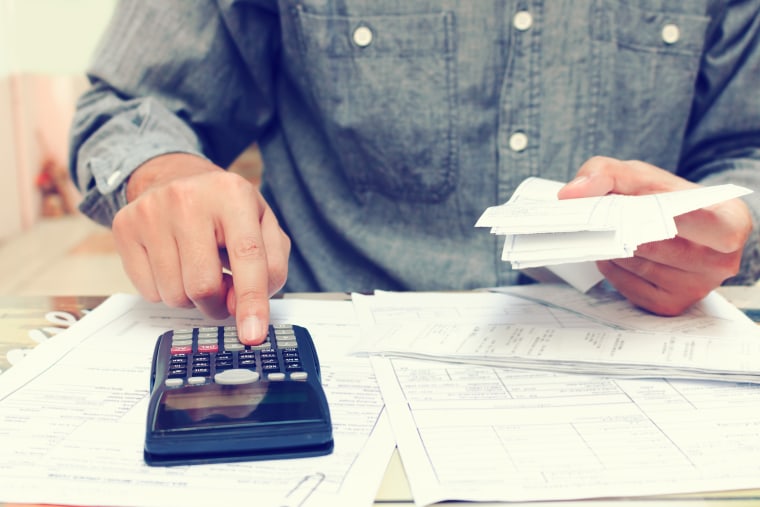Personal finance writer Michael Timmermann is keeping all his receipts and saving hundreds in the process.
The personal finance writer says his “Save Your Savings Challenge” garnered him $1,000 in just seven months. The process, he says, is simple.
Let’s say you purchase a pair of sneakers at 50 percent off, says Timmermann. In the “You Saved” section at the bottom of the receipt, it tells you exactly how much you saved. You might think you’ve saved a lot of money, he says, but if you then spend that savings on something else, you didn’t save at all.
“That’s just fake savings, because real savings is in an account that’s earning interest,” Timmermann tells NBC News BETTER.
He says to hold off on those extra purchases and hold onto your receipts instead.
Save all your receipts
When you buy something on sale or with a coupon, retailers often include a “You saved” section at the bottom of the receipt telling you how much you saved, says Timmermann.
Instead of tossing the receipt, put it in a jar or shoebox. At the end of each month, go through the receipts and tally up the amounts you saved. Then transfer the exact amount to an account that collects interest.
“I take that total number and I transfer it into an online savings account with a decent interest rate where that money sits until the end of the challenge,” Timmermann says.
Now in month 10, Timmermann says he has saved $1,456.
Run your receipts through cash-back apps
You can make a few extra dollars when you run your receipts through cash-back rewards apps like Ibotta, Fetch Rewards and Receipt Hog, says Timmermann.
“And all three of those apps will give you just minimal amounts of cash back for your purchases, particularly grocery stores, by scanning your receipts,” he says.
Create a goal
The next step, the writer says, is to establish a goal for what you will do with your savings when it reaches a certain amount, whether it’s investing or using it to pay down your debts.
“… in my case, I set a goal to take the money from my online savings account and transfer it to a Roth IRA at the end of this challenge,” he says.
Check your negative spending habits
Timmermann says the challenge will give you insight into where you tend to splurge. In his case, he says he realized he was spending too much money at the grocery store — throwing whatever items that tempted him into his cart.
“At one point I said, ‘Wow, I’ve gone to the grocery store three times this week, that’s way too much, I need to be planning my grocery shopping list a little bit more efficiently so I only have to go one time,’” he says.
Now, he keeps a precise list of what he needs to buy. He also cut the number of trips he makes to the grocery store each week.
“Over the course of this challenge, I’m noticing every month that I have fewer and fewer receipts in the box for each separate month,” he says.
Improve short-term savings goals
Most people make savings goals for the long-term, but the receipt challenge helps you focus on short savings, whether you need to pay off a loan or create an emergency fund, says Timmermann.
“I think something like the ‘Save Your Savings Challenge’ and keeping your receipts like this is something that gives you a daily reminder of the importance of saving — that’s good for everyone in the long run,” he says.
How the ‘Save Your Savings Challenge’ works
- Bank those receipts. Whenever you save on a purchase, stash the receipt in a jar or shoebox. At the end of each month, tally the amounts you saved listed on the bottom of the receipts. Then transfer the exact amount to an account that collects interest.
- Run your receipts through cash-back apps. You can make a few extra dollars when you run your receipts through rewards apps like Ibotta, Fetch Rewards and Receipt Hog, says Timmermann.
- Set a goal. Establish a goal for what to do with your savings once it’s reached a certain amount, whether it’s investing or paying down debt.
- Review your habits. When you’re looking through your receipts, note the purchases you tend to splurge on and figure out how to change your poor spending habits.
GET MORE SAVING AND SPENDING HACKS
- How to budget (and get out of debt) if you live paycheck-to-paycheck
- How to create an emergency fund in just 90 days
- Need to save money fast? Try a spending ban
Want more tips like these? NBC News BETTER is obsessed with finding easier, healthier and smarter ways to live. Sign up for our newsletter and follow us on Facebook, Twitter and Instagram.

